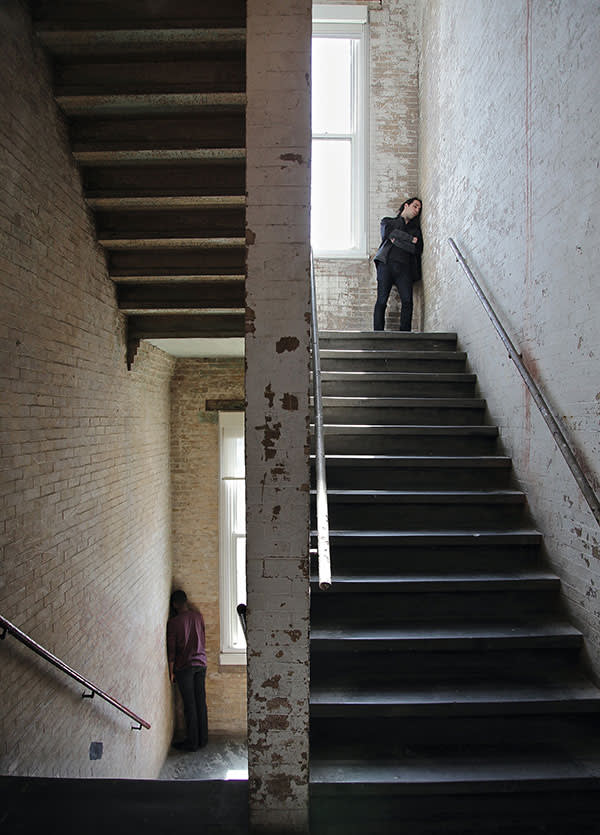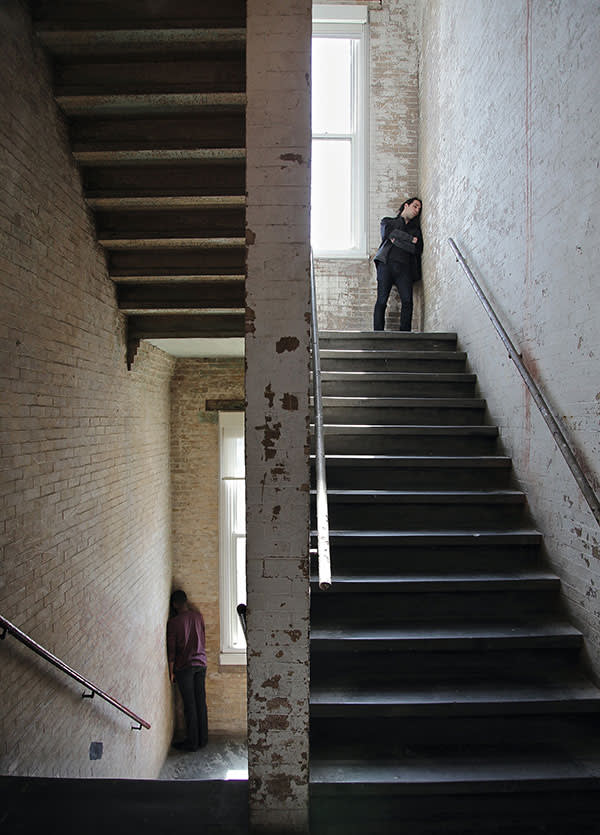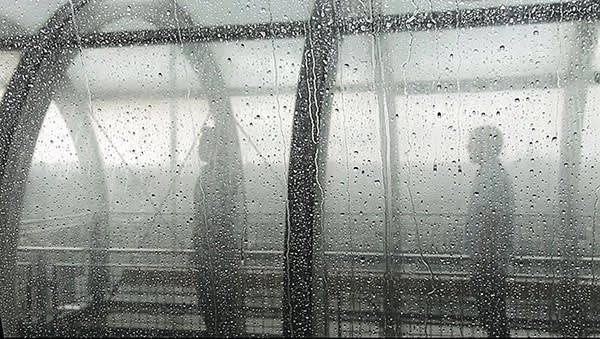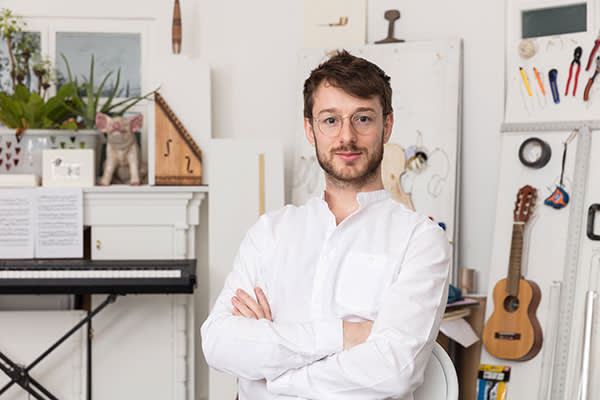
Walls really can have ears

How do you play a building like an instrument? Sound artist Oliver Beer talks about creating work especially for the spaces at Thaddaeus Ropac’s new London gallery
What musical note does your bedroom make? Or your office? Or your train carriage? It may not be something that preoccupies most people, but for the past 10 years British artist Oliver Beer, 31, has been obsessively identifying the individual notes that naturally resonate in architectural spaces — using the same acoustic principles as getting a sound out of a wine glass — and turning them into ethereal works of art.
“Anywhere with walls has a resonant note,” he says. “You can play a building like an instrument.”
We meet at Thaddaeus Ropac’s new gallery in London, opening on April 28, where visitors will have the opportunity to hear Beer’s “Composition for London”, the next iteration of his “Resonance Project”. It has been created specifically for the spaces within the 18th-century Ely House in Mayfair. For the 13-week duration of the exhibition, classical singers will perform Beer’s choral compositions, anchored to the natural harmonies around the staircase. Performances will be interspersed with the sounds emanating from a group of vessels, ranging from an Etruscan head of a youth (3rd to 4th century BCE) to a large butcher’s ceramic pig. Using microphones and a feedback loop system, the artist can make it seem as if the objects are singing independently.
With three other exhibitions across two floors (Gilbert & George, Joseph Beuys and Minimal art from the collection of Egidio Marzona), Beer’s sounds may turn an ambitious gallery opening into a haunting, compelling experience.
Beer’s choral work is so tied to the architecture it occupies that he has been living and working at Ely House for the past six months while it has gone through major renovation under architect Annabelle Selldorf. He is excited that in the process he has found that the building naturally contains an augmented fourth (specifically the notes D and G-sharp), an interval so dissonant that it was named the “Diabolus in Musica” (the devil in music) and banned from Renaissance church music under threat of excommunication. Beer enjoys the irony that the building was originally built for Bishop Edmund Keene of Ely.
It is easy to see why Beer’s enthusiasm for such detail, along with his understated and articulate geekery, has been winning him curatorial praise these past few years. Until recently he has been more vaunted in France, where he was artist-in-residence at Paris’s Palais de Tokyo in 2011, and where he has had exhibitions at the 2013 Biennale de Lyon and at Paris’s Centre Pompidou in 2014. “The French know and love him — they’ve taken him to their heart,” says Polly Robinson Gaer, who is running Ropac’s London space.
Beer is now having something of a stellar homecoming. The opening at Thaddaeus Ropac in London coincides with his first UK solo show at Ikon Gallery in Birmingham, which also hosted Beer’s first UK public gallery screening in 2010 (of his film “Training”, back in the current show).
Other exhibitions in the pipeline include a permanent installation at David Walsh’s Museum of Old and New Art in Tasmania, and Beer is also one of the first artists chosen for the 21st Biennale of Sydney, which opens in March 2018. He is a growing presence across the Atlantic too, where performances of his Resonance Project have been held in New York’s MoMA PS1 and the Watermill Center.
Themes around sound and time, spliced and re-orchestrated, permeate Beer’s practice, and yet his meticulous work embraces the accidental too. One of the most moving pieces at the Ikon show is “Oma’s Kitchen Floor” (2008), a hang of his grandmother’s linoleum floor, complete with the marks made by her tread over 40 years: there are dark areas in front of the oven, the fridge, the door. Beer describes it as “like a drawing . . . these worn patches describe half a lifetime of movement.” Oma’s walking stick appears in his more recent series of works. For these, he slices through material objects and files them down so thin they could be drawings on canvas: Beer calls them two-dimensional sculptures. Musical instruments also feature; there is a sliced violin and cello among these more commercially viable works.
Beer is also a commanding film-maker. For the Ikon exhibition he created “Reanimation (I Wan’na Be Like You)” (2017), for which he filmed 2,500 drawings by local children, aged from just a few months to 13 years, and pieced them together in age order to recreate the famous song from Disney’s The Jungle Book. His new film “The A to Z of King” (2017), which re-orders alphabetically words from Martin Luther King Jnr’s last “Mountaintop” speech of 1968, is even more powerful.
Beer’s varied skillset encapsulates one of the benefits of being a young artist at a time when boundaries have blurred between traditionally discrete arts including music, theatre and visual art. For a digital native, technology is a vital tool — although he is wary of his Resonance works being recorded. “They have to be experienced, you have to be in them, they can’t really be listened to through speakers,” he says.
Beer is keen for people to participate more actively by learning how to identify notes in space. I watch and listen as he hums chromatically in a corner of Ely House and when he finds the correct note, it definitely resonates — sounding louder and as if it comes from elsewhere. When I rather meekly join in, I feel a physical vibration through my voice box. Beer describes this as the “punching out” moment and suggests that I hone my skill in the shower where the enclosed space enables soundwaves to reflect more quickly. Beer’s obsession began in this way, when “a very small child”, and now, he says, he finds the natural notes in stairwells of apartment blocks, pedestrian tunnels and even on subway trains. London may start to sound a little different from this week.
Photographs: Oliver Beer and Galerie Thaddaeus Ropac; Mark Blower; Galerie Thaddaeus Ropac

‘Tuning an Architectural Space’ (2015), from Oliver Beer’s Resonance Project series © Oliver Beer and Galerie Thaddaeus Ropac

Oliver Beer’s architectural acoustic performance from the Resonance Project series at Paris’s Centre Pompidou (2014) © Oliver Beer

Oliver Beer © Mark Blower